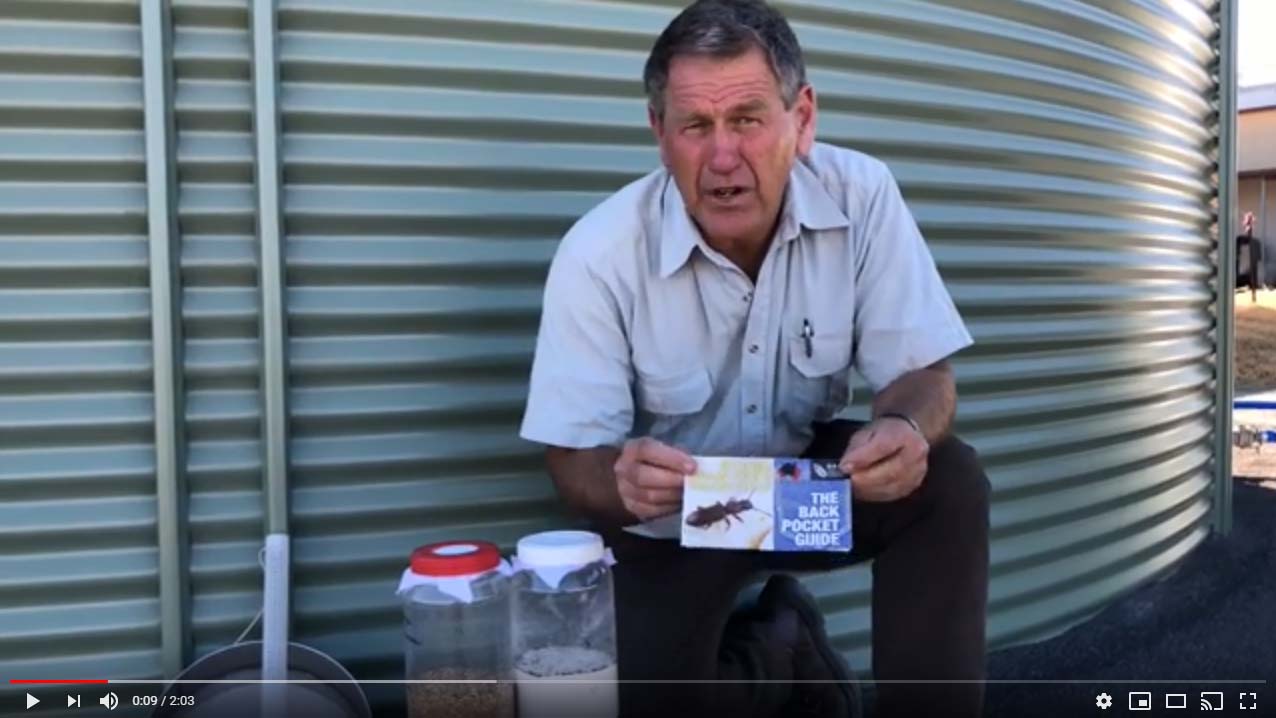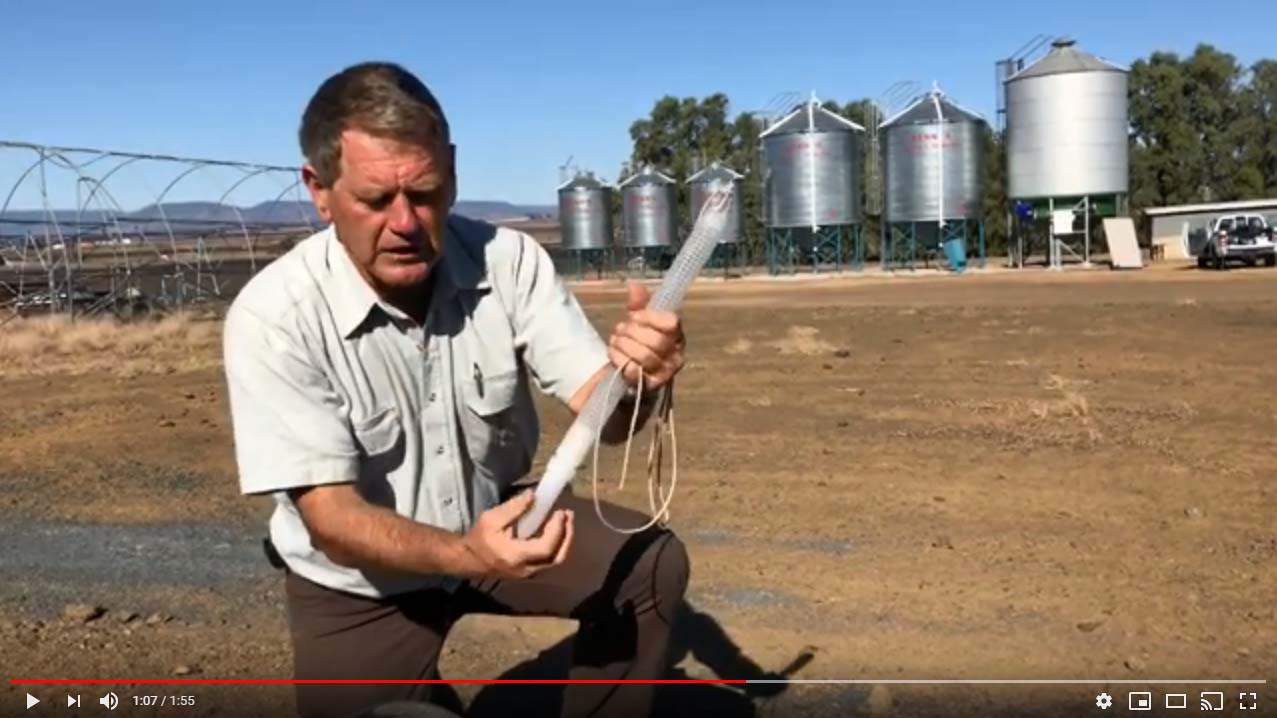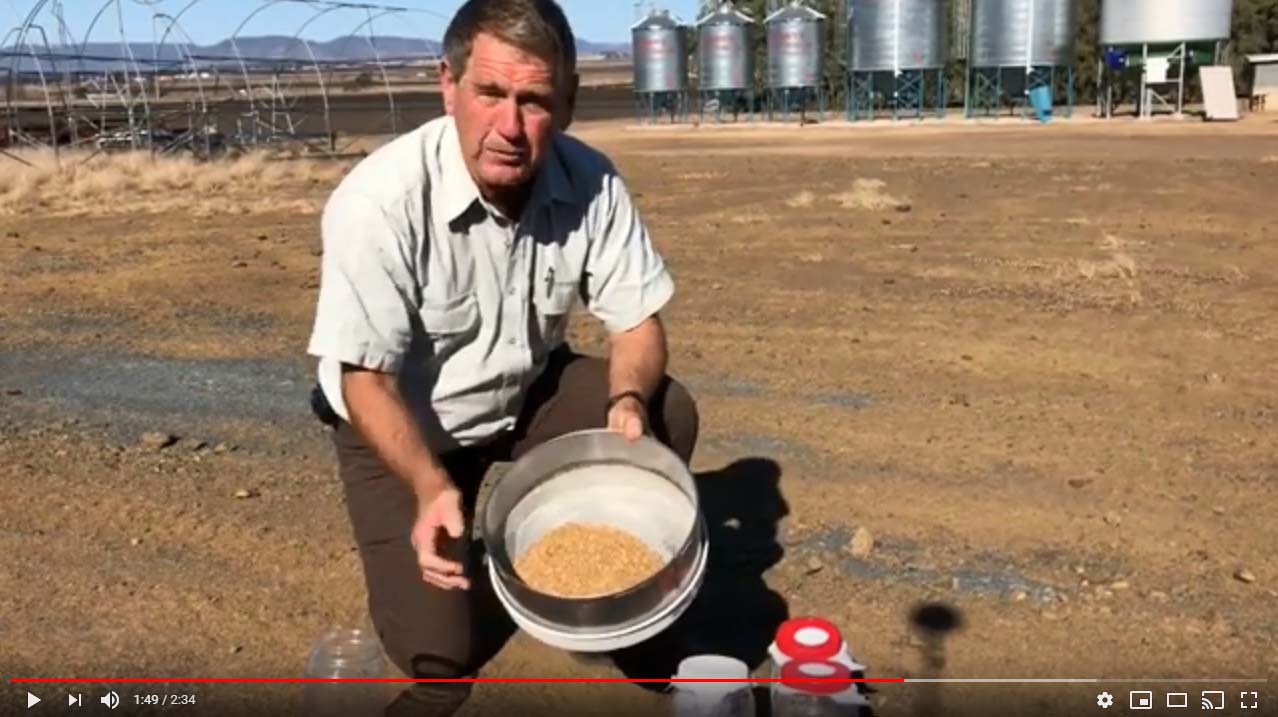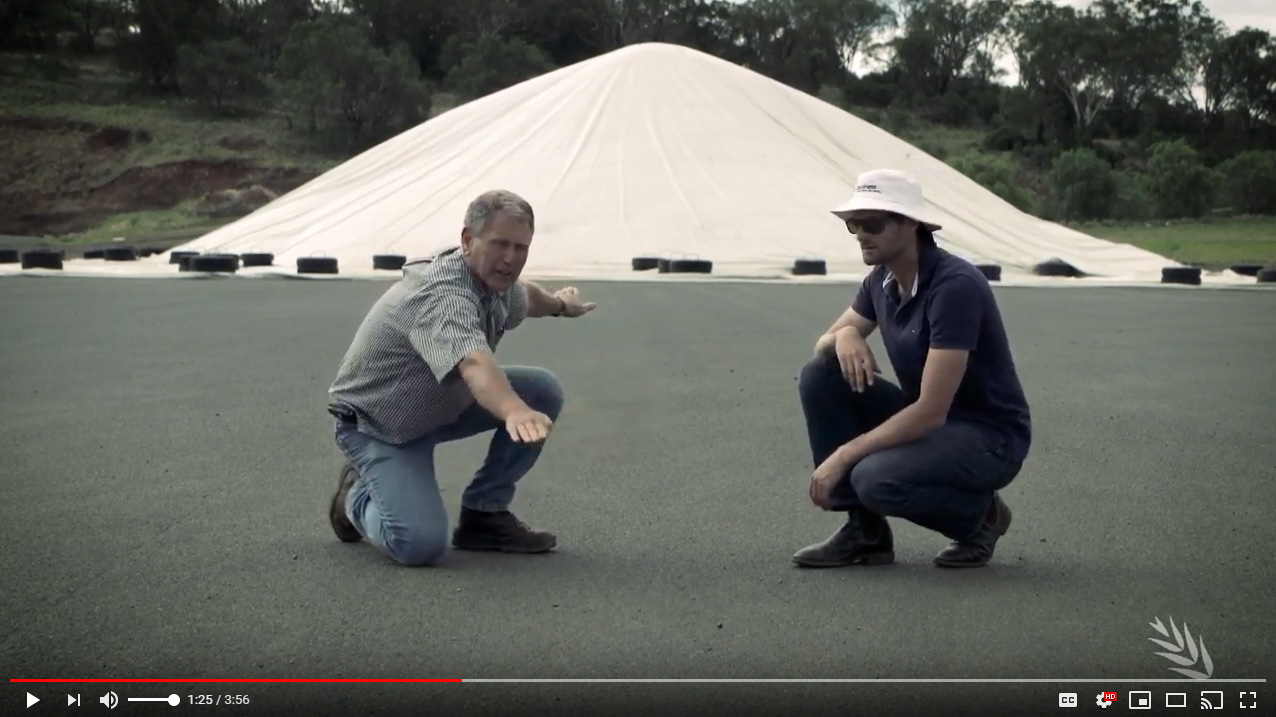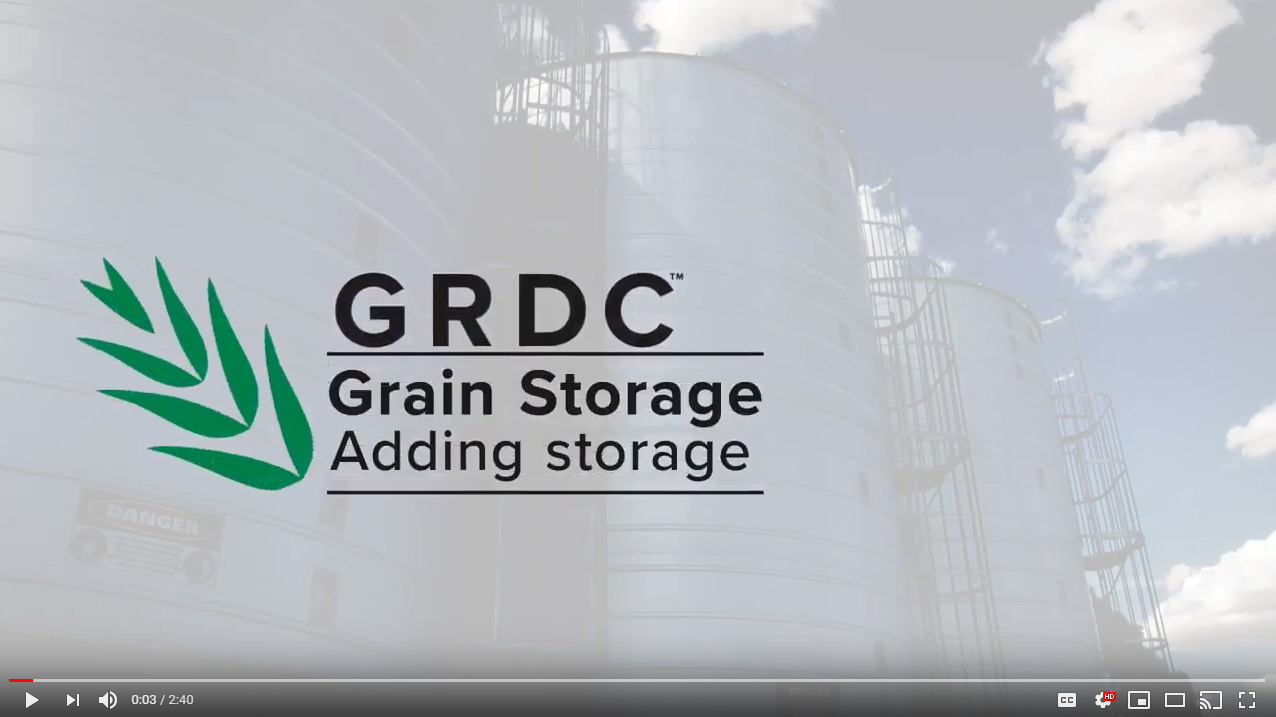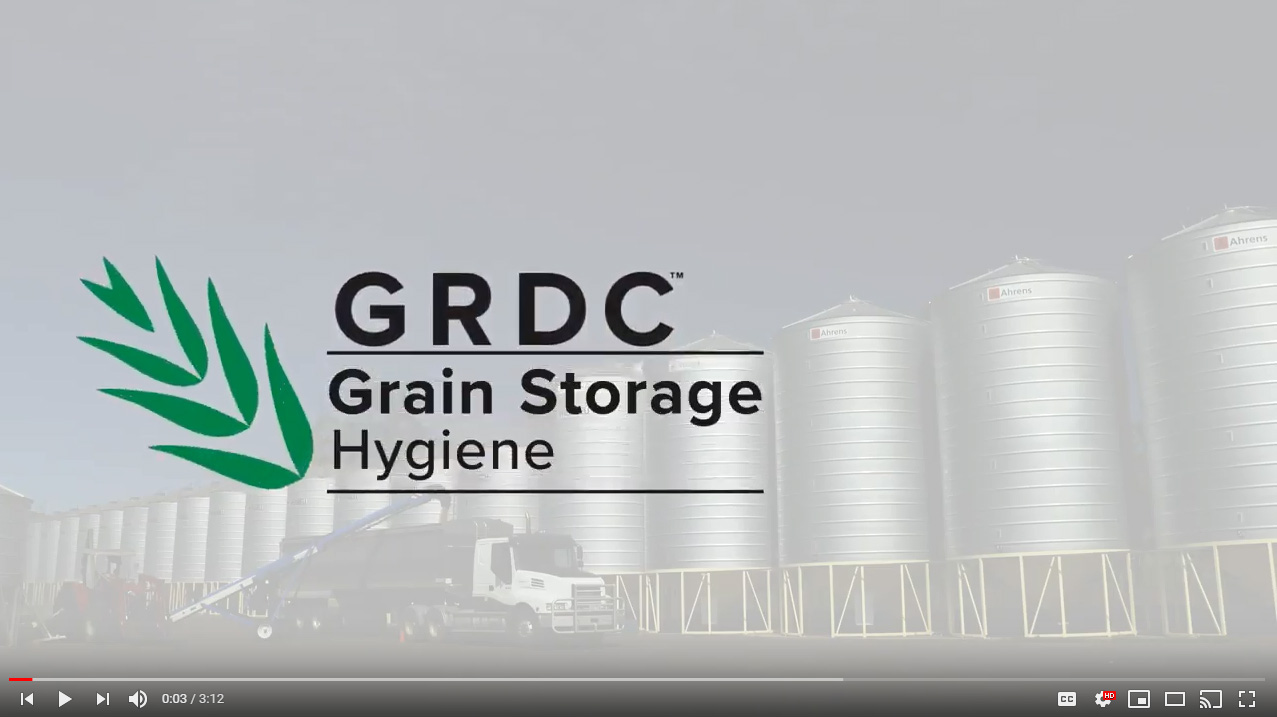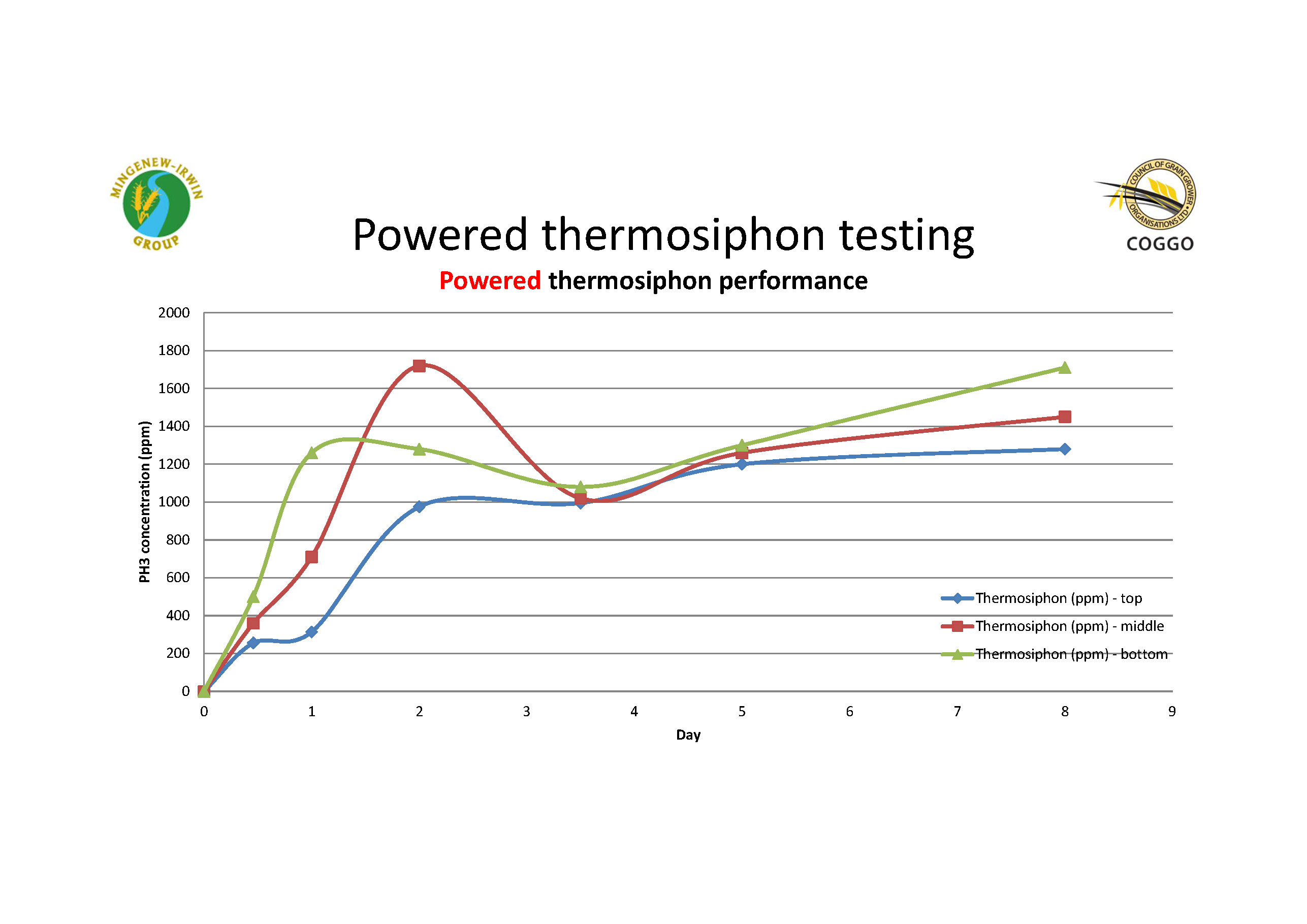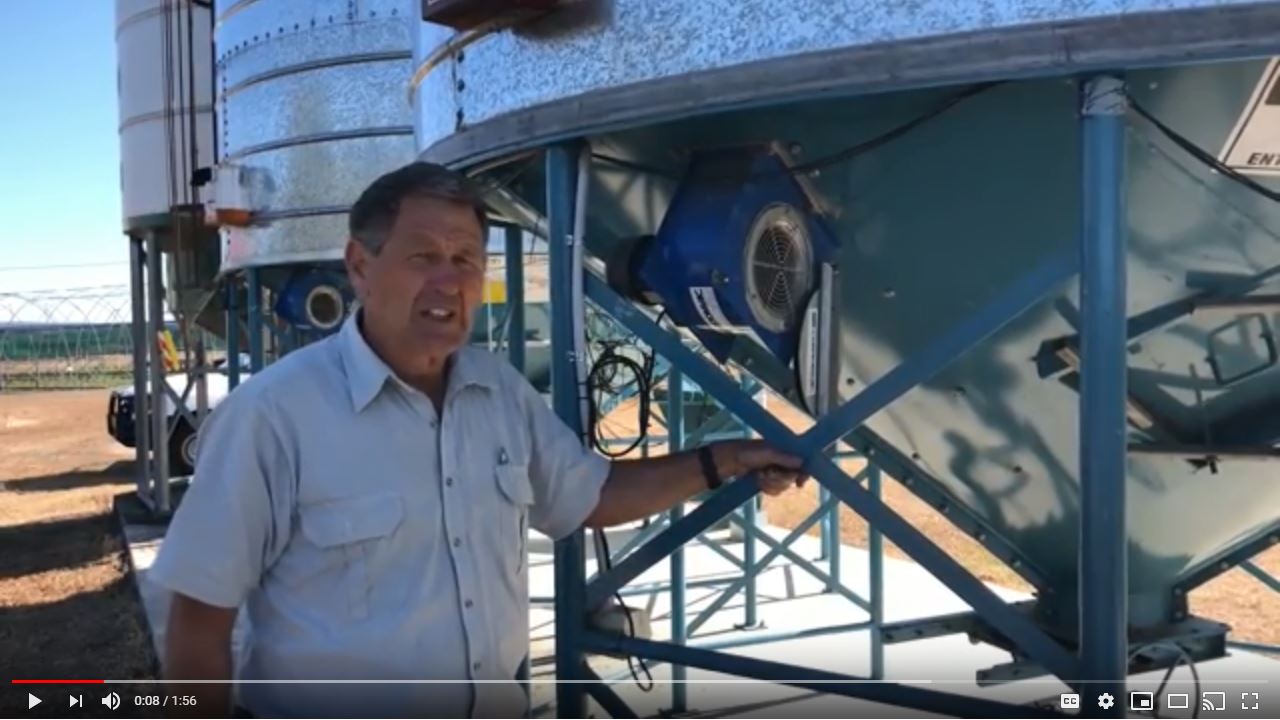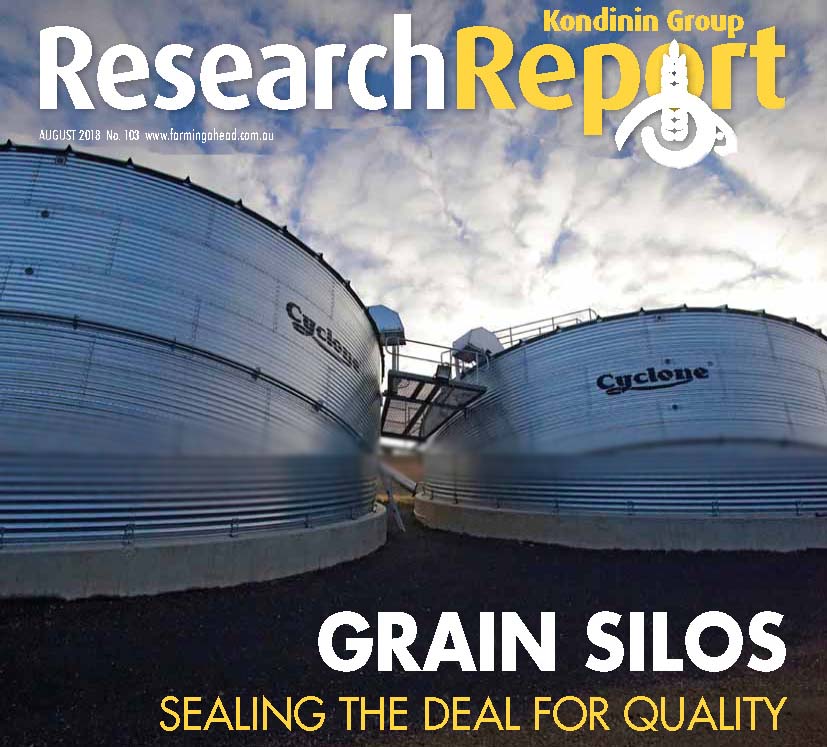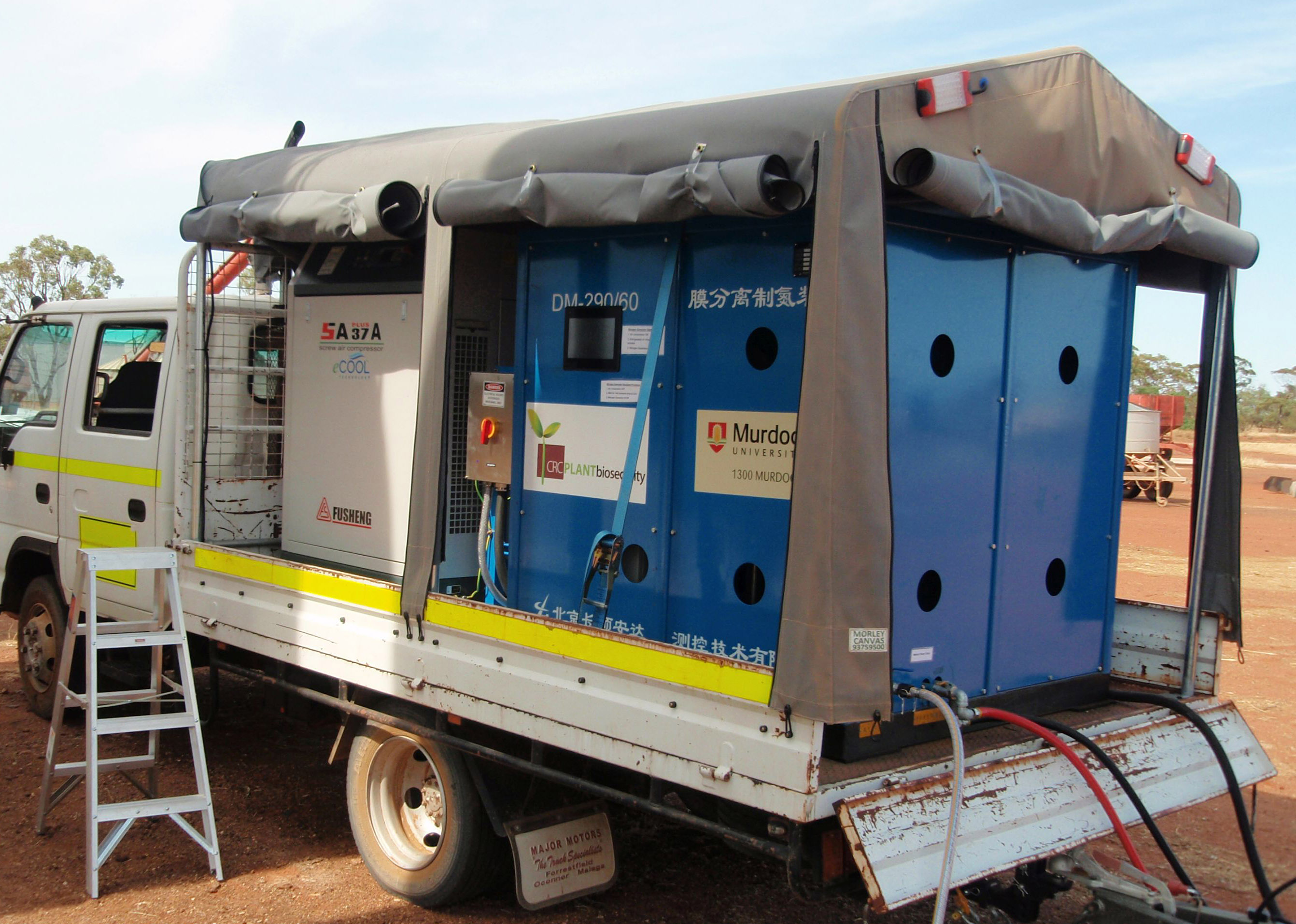Philip Burrill provides some tips on identifying grain storage pests using the GRDC Back Pocket Guide to Stored Grain Pests
Using probe traps to monitor pests
Monitoring and sieving for pests
Bunker storage setup
Adding on-farm grain storage – considerations
Tips on grain storage hygiene
Powered Thermosiphon Trial (COGGO 2018)
Pressurising a silo
Grain Silos – Sealing the deal for quality (Kondinin Group Research Report 2018)
Nitrogen – Notes for use in stored grain
Equipment requirements:
- Requires a gas-tight sealed silo – meeting Australian standard AS2628 being a five minute half-life pressure-test.
- Nitrogen generators are required to produce 99% concentration N gas from the ambient air which is: 78% N, 21% O₂, 0.9% Ar, 0.04% C0₂ and water vapour.
- Nitrogen generation units, two designs:
- “Pressure swing adsorption” (PSA) is the traditional style used by CBH at the export port. Requires an annual ‘pressure vessel’ inspection by authorities
- “Membrane” – advantage is it is a ‘flow through’ system with no pressure vessel required.
- These units for smaller silos are typically sold in the 30 to 60 m³/ hour nitrogen output range. Large capacity units can be purchased. They are powered by either diesel or electricity.
- Capital costs of the 30 to 60 m³/ hour Nitrogen generators range from $50,000 to $75,000 from China, or approx. $95,000 Australian built.
- Diesel / electricity operating costs for the generators ranges from $0.70 to $1.00 / tonne.
- An oxygen concentration monitor is required (e.g. Drager XAM 5000 – cost approx. $2,000)
Application notes:
- To achieve effective storage grain insect pest control the aim is to use the 99% nitrogen gas to purge oxygen levels in the storage from 21% to below 1% oxygen concentration.
- Nitrogen gas (99%) is delivered into the base of the silo with the aim of completing at least two air changes to reduce oxygen levels measured in the head-space at the top of the silo to less than 1% O₂.
- Example: Using 60 m³/ hour nitrogen generator on a 100 tonne wheat capacity silo (130 m³ silo). Two flushes of 130 m³ = 260 m³ takes the generator just over 4 hours. Silo is monitored, aiming for less than 1% O₂ at the top of the silo with the top lid just open. When 1% O₂ concentration target is met, the silo top lid is sealed shut.
- Silo remains sealed for a period of 14 – 15 days with grain temperatures of 25°C and above. If grain temperatures are lower e.g. 20°C and below, insect pest control of the full life cycle may not be effective. Extension of time, 3 weeks plus, should help with pest control results.
- While the silo is sealed, O₂ concentration is monitored regularly to check that less than 2% O₂ is maintained. If very small silo leaks allow O₂ concentration to rise to 3 – 4% O₂, the generator needs to be reconnected to the silo and ‘nitrogen flushed’ to achieve the less than 1% O₂ target. Less than 3% oxygen over 28 days is adequate to control all insect life stages. However less than 2% is even better and will shorten the required exposure period.
- Silos sealed to a high ‘gas-tight’ standard will reduce the time, cost & labour to achieve a good result.
Advantages to using Nitrogen:
- Grain quality – high nitrogen atmosphere help to maintain good ‘colour’ in stored pulses and oilseeds – Lupins, Chickpeas, Canola.
- Oil content quality – with a low oxygen environment in storage there is less oxidation of oils in oilseeds – canola, sunflower, linseed.
- Pest control effective when low oxygen levels are maintained for the required time.
- No WHP or venting of grain required. Reduced work place health & safety risks when compared to using phosphine fumigation for pest control.
- A suitable alternative to using carbon dioxide (C0₂) for the organic grains industry.

